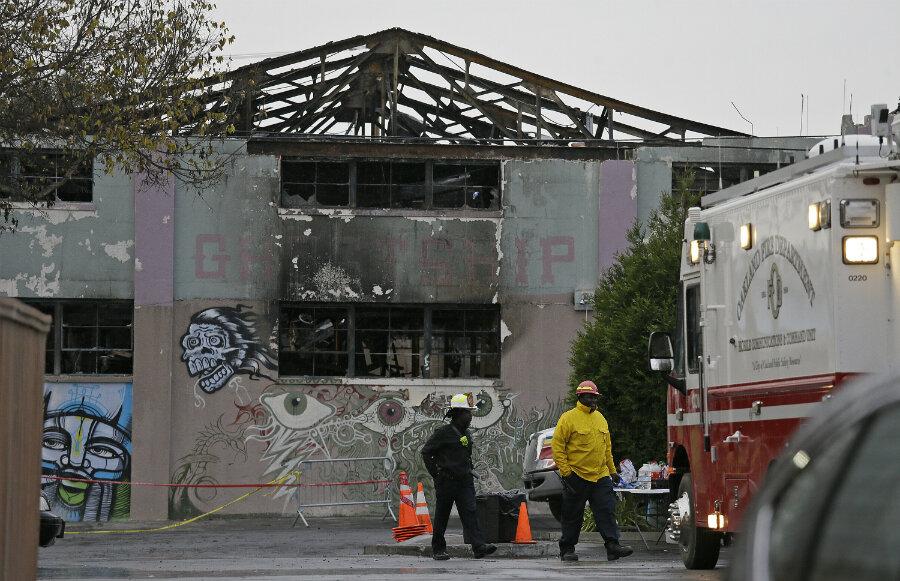Were Oakland officials aware of hazards before the Ghost Ship ignited?
Loading...
Oakland authorities were summoned on dozens of occasions over the past two years to the “Ghost Ship” warehouse before a fire at a late-night rave killed 36 people, according to records released by the city to media outlets.
The more than 600 pages of documents detail complaints by neighbors, residents and visitors to the warehouse, with police, firefighters and even city building inspectors turning up at the property in response.
The internal records suggest that police may have been aware that the warehouse was being used as a residence, contrary to the Oakland department’s statements: Officers responded to several landlord-tenant disputes at the site, and one person who called the department after apparently being locked out of the warehouse in 2015 described it as an "illegal shared housing" site. And in March of that year, an officer described entering the building to shut down an "illegal rave with drug and alcohol sales."
Just weeks before the Dec. 2 fire, a building inspector responded to a complaint about the warehouse being remodeled into residences. Upon visiting, the inspector was unable to get in, later sending a request to the owner to allow him entry.
Former residents at a site that served as an artist collective, event venue, and residence have described blatant safety hazards that included few exits, piles of scrap materials, and winding electrical cords. The downstairs served as residence, with RVs and nooks for rent, while the upstairs hosted concerts.
The latest findings resurface questions about how authorities should have responded to hazards at a warehouse that drew the sort of freewheeling cultural life that has been part of Oakland and San Francisco’s lifeblood for decades, but faces an uncertain future as those cities undergo rapid transformation.
As The Christian Science Monitor reported in December, the deaths at the site could put extra scrutiny on other sites like it:
Fatal fires at nightclubs and other venues have historically spurred the public to insist upon better enforcement of fire codes, both in the United States and around the world. Given that local authorities had fielded a number of complaints about the so-called Oakland Ghost Ship, but failed to intervene before it burned, this latest disaster could prod the next round of reforms.
"That place was just a death trap," Shelley Mack, a former resident of the converted two-story warehouse told The Associated Press. "I didn't think it was going to last this long before it went up or somebody shut it down."
The newly released records also show that firefighters responded to a blaze outside of the warehouse in 2014, though there is no record suggesting that they entered.
Oakland fire officials have not yet announced the cause of the blaze. But the vice president of the firefighters union, Zac Unger, told the AP that the chief at the time of the warehouse fire, Teresa Deloach Reed, had been on leave for weeks, with acting chiefs filling in. Mr. Unger added that the department does not know when or if she will return. Ms. Reed’s executive assistant told the wire service that "city policy" prohibited officials from discussing the matter.
This report contains material from the Associated Press and Reuters.








